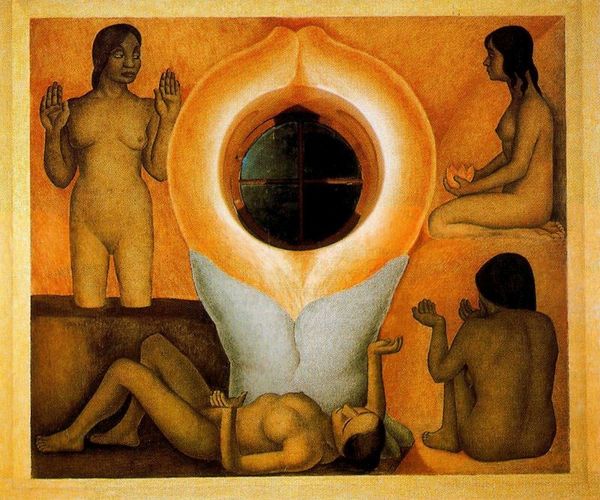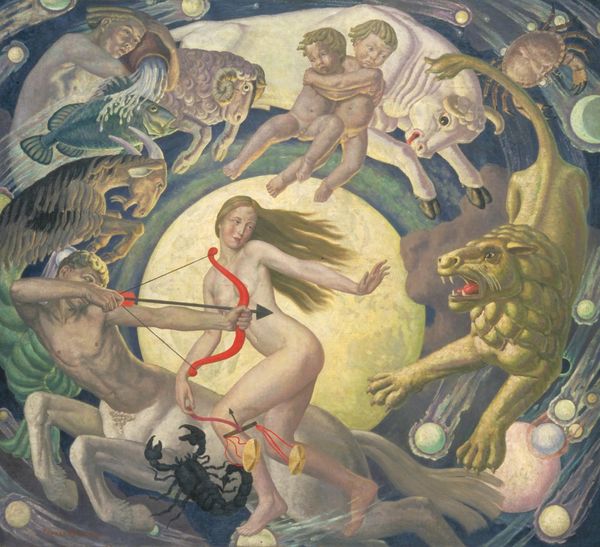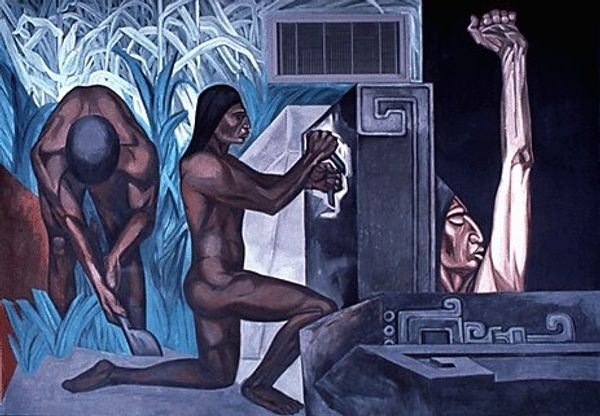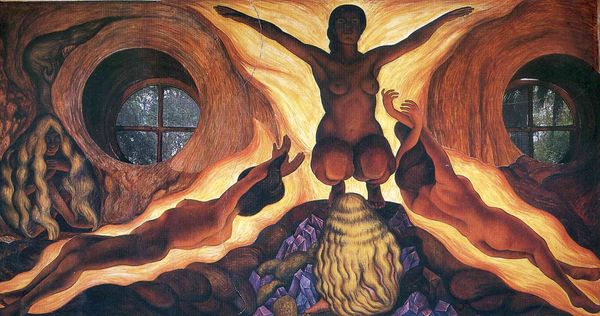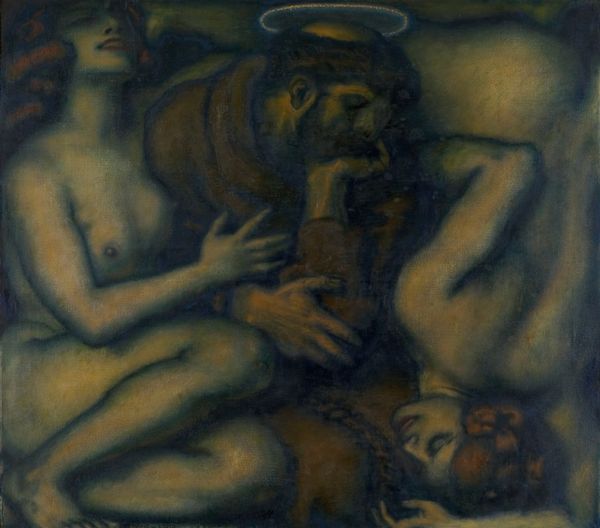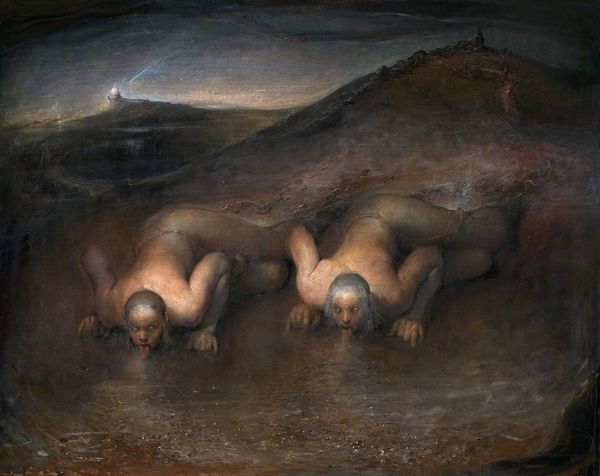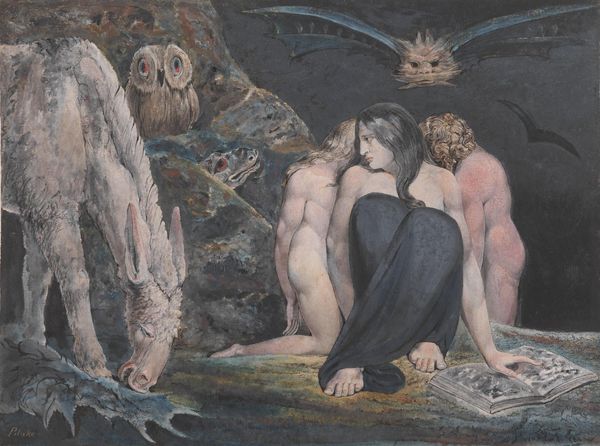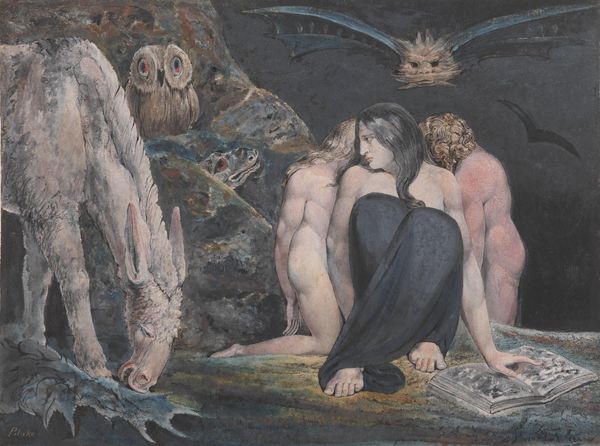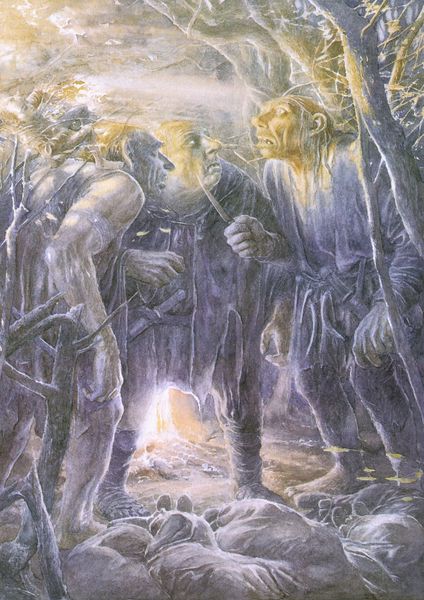
#
portrait reference
#
acrylic on canvas
#
portrait head and shoulder
#
animal portrait
#
animal drawing portrait
#
portrait drawing
#
facial portrait
#
portrait art
#
fine art portrait
#
digital portrait
Copyright: Diego Rivera,Fair Use
Editor: We are looking at Diego Rivera's 1926 mural "The Abundant Earth" at Chapingo Autonomous University in Mexico. I’m immediately struck by how the figures are intertwined with the landscape; there's a strong sense of connection to nature. What do you make of this mural? Curator: For me, this mural isn't just a depiction of figures in nature. It is Rivera's engagement with the very *materials* of representation to emphasize labor and materiality itself. The fresco technique – applying pigment to wet plaster – connects the artwork directly to the physical labor of its creation and to the land. Editor: That's interesting. How does the technique relate to the mural's message? Curator: Notice the prominent presence of the hole carved in the tree and the presentation of the nude individuals. This suggests a connection to fertility cults and pagan representations of gods being tied to mother nature's womb, as an allegorical association of mankind extracting raw materials from nature itself, which in turn they manipulate and use to create value. Think about what the figures *do*. They hold the 'fruits of the Earth' - sustenance, children - and literally embody consumption as well as production. What is produced and who owns that production are very present here. Editor: So it’s not just about celebrating nature, but about considering labor, resources and their connection? Curator: Precisely. It makes us think about the systems of labor and material processes behind even seemingly simple things, and, fundamentally, about ownership. Editor: That is so relevant, even today! It gives me a lot to consider about the role of art, challenging its function as simply aesthetic, when it's instead representative of production! Curator: Absolutely, thinking about process allows us to investigate all those connections between nature and our consumption patterns.
Comments
No comments
Be the first to comment and join the conversation on the ultimate creative platform.

